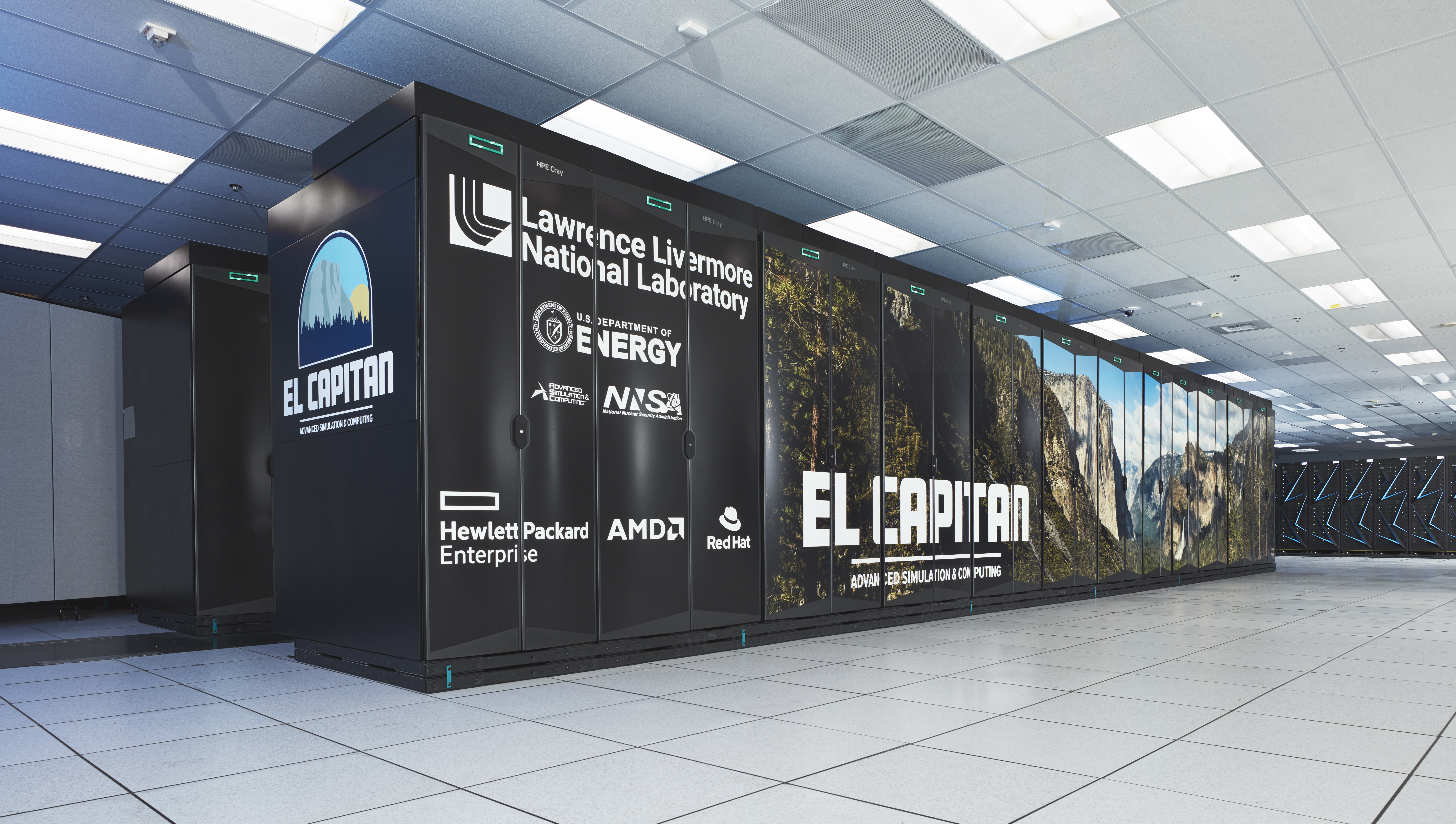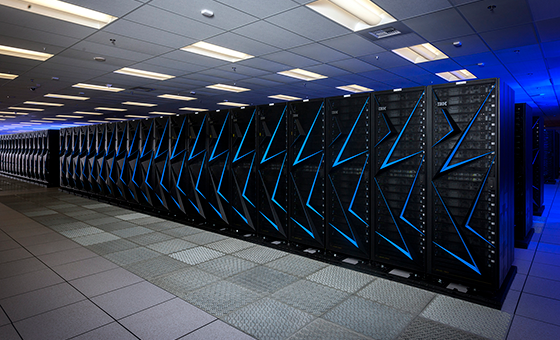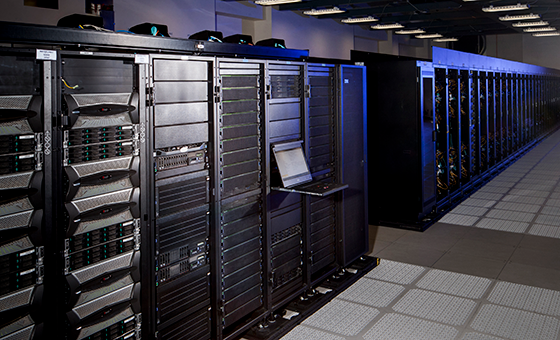The Advanced Technology (AT) systems sited and in use at LLNL were planned, researched, developed, procured, tested, integrated, and deployed for programmatic computing needs of the nation’s Stockpile Stewardship Program. Projects and technologies include strategic planning, performance modeling, benchmarking, and procurement and integration coordination, market research, and the investigation of advanced architectural concepts and hardware (including node interconnects and machine area networks) via prototype development, deployment, and test bed activities. Planned and current systems include:
El Capitan: Announced in August 2019, The Department of Energy (DOE), National Nuclear Security Administration (NNSA) and Lawrence Livermore National Laboratory (LLNL) have partnered with Cray Inc. to build the NNSA’s first exascale supercomputer, “El Capitan.” El Capitan will have a peak performance of more than 2 exaflops (2 quintillion calculations per second), will run roughly 10 times faster on average than the Sierra system, and is projected to be at least four times more energy efficient than Sierra. El Capitan is anticipated to be delivered in FY24.
Sierra: Livermore’s current AT high performance computing system came online in 2018. ASC Program scientists and engineers use Sierra to assess the performance of nuclear weapon systems as well as nuclear weapon science and engineering calculations. These calculations are necessary to understand key issues of physics, the knowledge of which later makes its way into the integrated design codes. The IBM-built Sierra supercomputer is providing over six times the sustained throughput performance and over five times the sustained scalable science performance of its predecessor, Sequoia, with a 125 petaFLOP/s peak. Sierra, which combines two types of processor chips—IBM’s Power 9 processors and NVIDIA’s Volta graphics processing units, is over five times more power efficient than Sequoia, with a peak power consumption of approximately 11 megawatts.
Sierra Early Access: In late 2016, LLNL acquired three small-scale “early access” (EA) versions of Sierra, consisting of IBM Minsky compute nodes with 20 Power 8 cores each and 4 NVIDIA Pascal graphics processing unites (GPUs). These small systems featured components only one generation behind those of Sierra. EA systems enabled application porting and tuning in advance of the CORAL Sierra system delivery and acceptance, employing beta software co-designed by the CORAL laboratories and IBM.
Lassen: This machine is similar to the classified Sierra system (same architecture) but smaller in size: about 20 petaFLOP/s peak performance compared to Sierra’s 125 petaFLOP/s peak. The system is designated for unclassified simulation and analysis. Lassen was part of the contract that brought Sierra to Livermore, and it debuted in 2018 at No. 11 on the TOP500 List, one spot behind LLNL’s the recently retired Sequoia.
Governance Model
The governance model provides a methodology to effectively allocate and schedule AT computing resources among the three National Nuclear Security Administration (NNSA) laboratories for weapons deliverables that merit priority on this class of resource. Download the document here.
Retired Systems
Sequoia: A 20-petaflops IBM BlueGene/Q advanced technology platform that brought many innovations over the previous BlueGene generations, including 16 cores per node, multithreaded cores, a five-dimensional torus interconnect, water cooling, and optical fiber links. The system had 1.6 million processor cores with a total possible 102 million hardware threads all operating simultaneously. This type of parallelism dictated new directions in supercomputing and ushered in a new regime of the possible physical systems that could be simulated numerically. Codes optimized for multi-core and multi-threading ran best on this machine. Sequoia was used as a Capability Computing Campaign (CCC) machine for tri-lab stockpile stewardship milestones.
BlueGene/L earned the number 1 position on the TOP500 list of world's most powerful supercomputers from Nov. 2004 to Jun. 2008 with a sustained world-record speed of 478.2 teraFLOP/s. BG/L was a revolutionary, low-cost machine delivering extraordinary computing power for the nation's Stockpile Stewardship Program.








